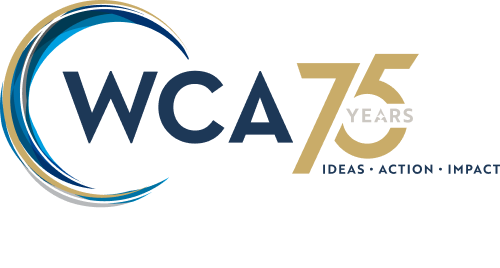Editor’s note: This letter was sent earlier this month by the Westchester County Association, the Building and Realty Institute and Non-Profit Westchester to County Executive George Latimer, County Planning Commissioner Norma Drummond, County Budget Director Lawrence Soule and Catherine Borgia, chairwoman of the County Board of Legislators. It outlines four actionable strategies for addressing affordable housing needs. Additional community organizations joined the WCA, BRI and NPW as signatories.
Dear County Executive Latimer, Commissioner Drummond, Budget Director Soule, and Chair Borgia:
We would like to thank the County for expanding the conversation around housing needs throughout our region. Westchester’s housing shortage is decades-long in the making and continues to be a serious impediment to economic growth and community vitality. It remains a shared challenge for our businesses, nonprofits, workers, residents, and local municipalities.
The 2019 Westchester County Housing Needs Assessment and the subsequent years of budget investment to assist with land acquisition and infrastructure projects that would support new housing developments are moving the needle in terms of addressing this shortage and leading local municipalities by example. This year’s proposed budget dedicates $90 million to affordable housing including $50 million in Coronavirus State and Local Fiscal Recovery Funds program, a part of the American Rescue Plan Act. Another positive step.
As budget work continues, we strongly urge you to consider how best to use these funds to encourage and incentivize both housing developers and local municipalities — many of which still have exclusionary zoning or outmoded practices which limit the opportunities to address our shared problem — to build the housing we need.
We recommend that the County examine and implement new strategies beyond its current efforts to maximize the level of affordable and workforce housing production, including the following:
- Utilize SLFRF funds as gap financing to improve the feasibility and accelerate Low-Income Housing Tax Credits (LIHTC) developments or other developments that exceed a threshold of 10% affordable units and/or achieve deeper levels of affordability below 60% AMI. Developers who are willing to go above the minimum in producing Fair & Affordable Housing units, including wholly affordable developments, and developers who are willing to produce deeply affordable units are usually heavily reliant on LIHTC and other financing through the New York State Division of Homes and Community Renewal. Having a County-managed supplemental source of funding, beyond the existing New Homes Land Acquisition and Infrastructure funds, could get more of these affordable units funded and will accelerate the timeline of developments. This discretionary gap financing is critical, would send a strong signal to the state about Westchester’s commitment to affordable housing, and would then make Westchester a priority for State-managed resources. (This use of funds has been categorized as presumptively eligible by the United States Treasury Department.)
- Create a grant program for multifamily preservation and revitalization. The Westchester County Housing Needs Assessment identified a significant portion of affordable housing units in need of repair, preservation, and reinvestment. Presumably many of those units are rent-stabilized and as such are subject to new and much more stringent restrictions on the financing of individual apartment improvements and major capital improvements under the 2019 Housing Stability and Tenant Protection Act. Since these units tend to be among the most affordable rentals in the county, and since other changes to HSTPA have reduced options for them leaving a rent-stabilized status or dramatically increasing rent, a grant program preventing further disrepair would help preserve affordable housing stock. (This use of funds has been categorized as presumptively eligible by the United States Treasury Department.)
- Create a funding and technical support program for rezonings requiring more than one municipality. Although there is an increased amount of interest in successfully rezoning within half a mile of transit stations to produce high impact, mixed-income, mixed-use and walkable communities, including substantial affordable housing opportunities, the fractionalized nature of overlapping municipalities and school districts can make cross-municipal planning difficult. A specific line item of funding for the County Department of Planning to help coordinate such projects at the request of the municipalities can help produce more streamlined and better integrated proposals for rezoning that takes the needs of all communities into account.
- Supplement the County’s existing funding for infrastructure projects, earmarked for municipalities that have taken meaningful action in the past 5 years toward more inclusive zoning, denser zoning, or adopting more of the County’s model AFFH ordinance. The County has more requests for infrastructure improvements than it could get to with traditional sources of funding in successive five-year capital plans, even at the elevated funding levels seen in the last two capital budgets. Using SLFRF funds to undertake additional infrastructure projects which reward housing “early adopters” would encourage more communities to step up to the challenge. These are communities who have recently passed ordinances to allow for accessory dwelling units, greater density in downtown areas or near transit hubs, allowing for duplexes or quadplexes in previously single-family-only zones, or who have recently adopted or expanded elements of the County’s model affordable and fair housing ordinance. It could also apply to communities putting concrete actions on housing in place.
- Create a pilot program of financing for adaptive reuse of office, hotel, or commercial space similar to the statewide Housing Our Neighbors with Dignity Act program. New York State enacted the HONDA financing program to facilitate the conversion of hotels that closed or failing due to the COVID-19 pandemic and other commercial spaces to affordable / workforce housing. Although Westchester County saw its own share of closed hotels and continues to experience an acute contraction of office space occupancy, it was not included in the statewide program. A pilot program of short-term financing to jumpstart the potential conversion of these adaptive reuse projects would put more affordable units into the pipeline and would demonstrate whether this program had merit for continued funding in future capital budgets.
In conclusion, we appreciate the County’s leadership in housing and the historic budget sums dedicated to the issue. We stand ready to be partners in helping to determine what models and policies would have the largest impact in our Westchester housing market.
Sincerely,
Westchester County Association
Nonprofit Westchester
The Building & Realty Institute
The Welcome Home Westchester Campaign
Building and Allied Construction Industries of Westchester
Child Care Council of Westchester, Inc.
Collins Capital Partners, LLC
Community Housing Innovations, Inc.
Construction Industry Council of Westchester & Hudson Valley, Inc.
GDC – Ginsburg Development Companies, LLC
Habitat for Humanity New York City and Westchester County
Housing Action Council
Hudson Gateway Association of REALTORS®
Hudson Hill Partners LLC
Kings Capital Construction
Lifting Up Westchester
Macquesten Companies
Mount Vernon Neighborhood Health Center, Inc.
Murphy Brothers Contracting
The NRP Group
Paul Adler, Esq., Rand Commercial
Regional Plan Association
RM Friedland
Westchester Children’s Association
Westhab, Inc.
Wilder Balter Partners, Inc.
Yonkers Family YMCA
Zarin & Steinmetz LLP
Click here to see the article on lohud.

